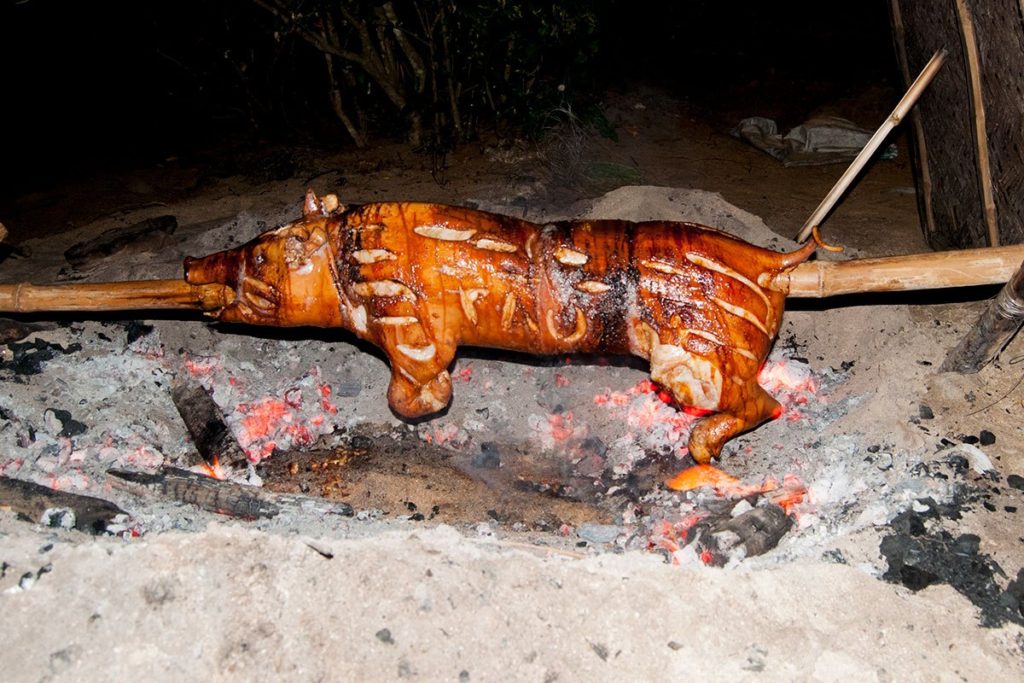
The terrified squealing signaled that the time had finally come. No doubt knowing what was about to happen, our shipmate for the past two days was not happy and he was letting everyone know it.
Four filipino men dragged the pig into the galley, using all their strength to wrangle the frightened beast up onto the table.
For us travelers aboard the Tao Philippines boat that day, it was about to get very real. Despite being a meat eater for my entire life, I had never seen a mammal slaughtered in flesh and blood. My heart raced knowing that was about to change.
A quick stab to the neck and soon it was quiet again. I was close enough that my feet were splashed with blood. I could feel the warmth of the blood and the strong smell of iron filled my nostrils.
Intense.
Later that night, once we had reached our final island beach camp, the pig was placed on a bamboo spit and roasted as the centerpiece of a farewell dinner.
The roast pig, called lechon, is a traditional feast for Filipinos at important celebrations like weddings and annual festivals.
The activity was in line with the philosophy of the Tao Philippines trip that connected travelers with a more traditional island lifestyle. We slept in open-air beach huts, lived without running water for five days, and electricity was scarce.
We had picked up the hog from a fishing village a couple days before on our boat trip from Coron to El Nido. I enjoyed the novelty of having the pig onboard but tried not to get emotionally attached knowing its eventual fate. But I do love animals and spent a few moments sitting with it as we sailed.
THE PIG ROAST
Once we arrived at our final beach camp of the expedition, the fire was stoked and the spit erected. The whole pig was skewered on a large bamboo stick and rotated above the fire for over two hours. We were short on time or else the pig roast could have been extended longer in order to maximize tenderness. Some pig roasts last a full day.
The expedition’s chief cook, Jeric, expertly carved the pig roast once it was off the spit. The ears are considered prize pieces for their crispiness, and the tail was even passed around to taste. The pig came off the fire with an appetizing maple syrup color and the skin shined with a mouth-watering glaze. The meat itself was incredibly tender and moist.
The blood had been collected during the slaughter and was combined with the fatty organs to make a rich stew known locally as dinuguan. I took a small helping to fully appreciate the animal’s life we had just taken. I can’t say it’s the best-tasting side dish I’ve ever had, but it wasn’t all that bad either.
Overall the food was excellent throughout the week with Tao. All meals were homemade by the crew with fresh fish, fresh greens, fresh fruit, and of course lots of rice. No meal disappointed.
Does this sound like something you’d like to be a part of on your next travel experience? If so, then definitely sign up for the Tao Philippines boat trip. I loved every moment of it. I met many new friends who I’ll always share this bond with for the rest of our lives.
PHILIPPINES FOOD
Most of my meals in the Philippines weren’t this exciting. I wrote another blog about what I ate the rest of the time.